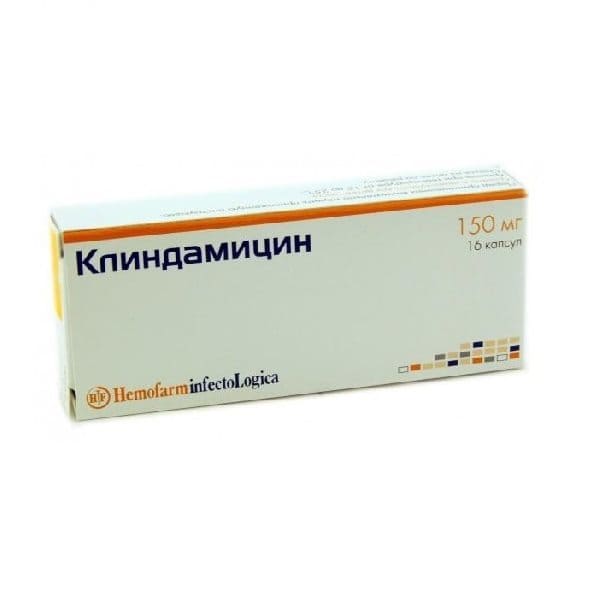You have no items in your shopping cart.

Sku:
pharmachologic effect
Clindamycin is a drug from the group of antibiotics - lincosamides, has a wide spectrum of action, a bacteriostatic, binds to the 50S subunit of the ribosome and inhibits protein synthesis in microorganisms. It is active against Staphylococcus spp. (including Staphylococcus epidermidis, producing penicillinase), Streptococcus spp. (excluding Enterococcus spp.), Streptococcus pneumoniae, anaerobic and microaerophilic Gram-positive cocci (including Peptococcus spp. and Peptostreptococcus spp.), Corynebacterium diphtheriae, Clostridium perfringens, Clostridium tetani, Mycoplasma spp., Bacteroidesspp. (including Bacteroides fragilis and Bacteroides melaningenicus), anaerobic gram-positive, non-spore-forming bacilli (including Propionibacterium spp., Eubacterium spp., Actinomyces spp.).
Most strains of Clostridium perfringens are sensitive to clindamycin, but other clostridium species (Clostridium sporogenes, Clostridium tertium) are resistant to the drug, therefore, for antibodies diagnosed with Clostridium spp., An antibioticogram is recommended.
The mechanism of action and antimicrobial spectrum is close to that of lincomycin (for some microorganisms, especially for bacteroids and non-spore forming anaerobes, it is 2-10 times more active).
Indications
- Infectious-inflammatory diseases caused by microorganisms sensitive to clindamycin;
- infections of the upper respiratory tract and infection of the ENT organs (pharyngitis, tonsillitis, sinusitis, otitis), lower respiratory tract (pneumonia, including aspiration, lung abscess, pleural empyema, bronchitis), scarlet fever, diphtheria;
- infection of the urogenital tract (chlamydia, endometritis, vaginal infections, tubo-ovarian inflammation);
- skin and soft tissue infections (infected wounds, abscesses, furuncles, panaritium), abdominal cavity (peritonitis, abscess), oral cavity;
- Acute and chronic osteomyelitis;
- septicemia (primarily anaerobic);
- bacterial endocarditis;
- prevention of peritonitis and intra-abdominal abscesses after perforation of the intestine or as a result of traumatic infection (in combination with aminoglycosides).